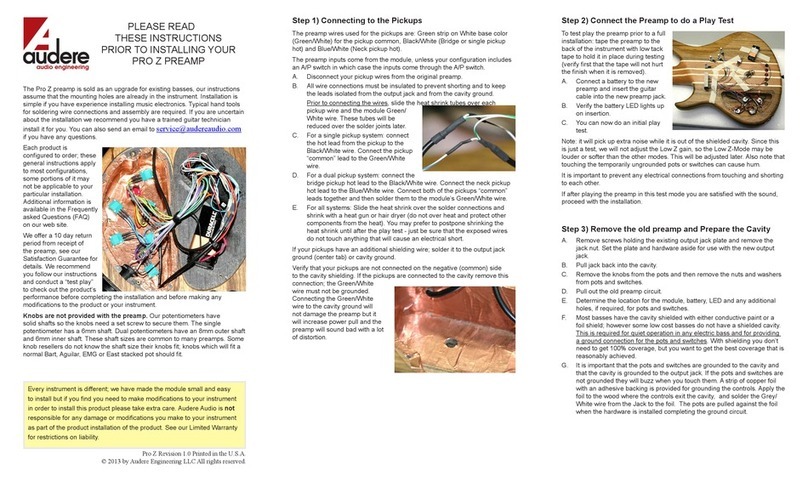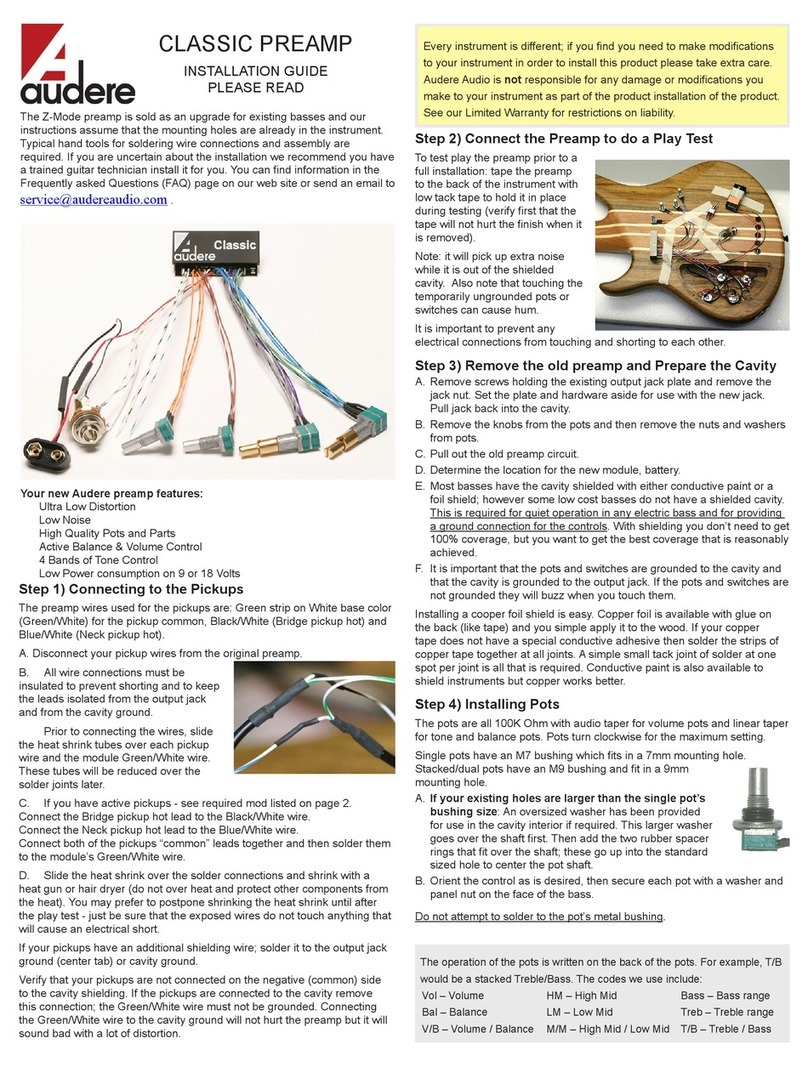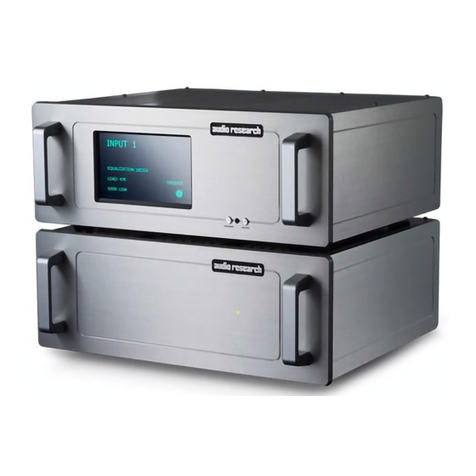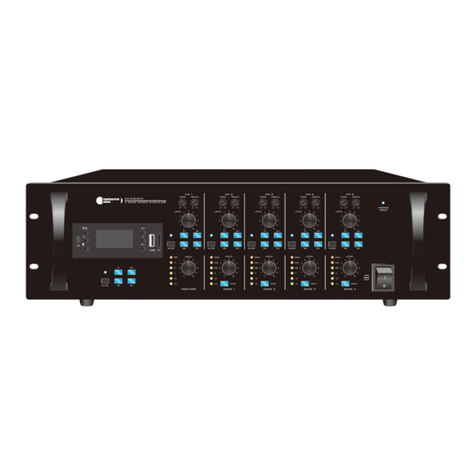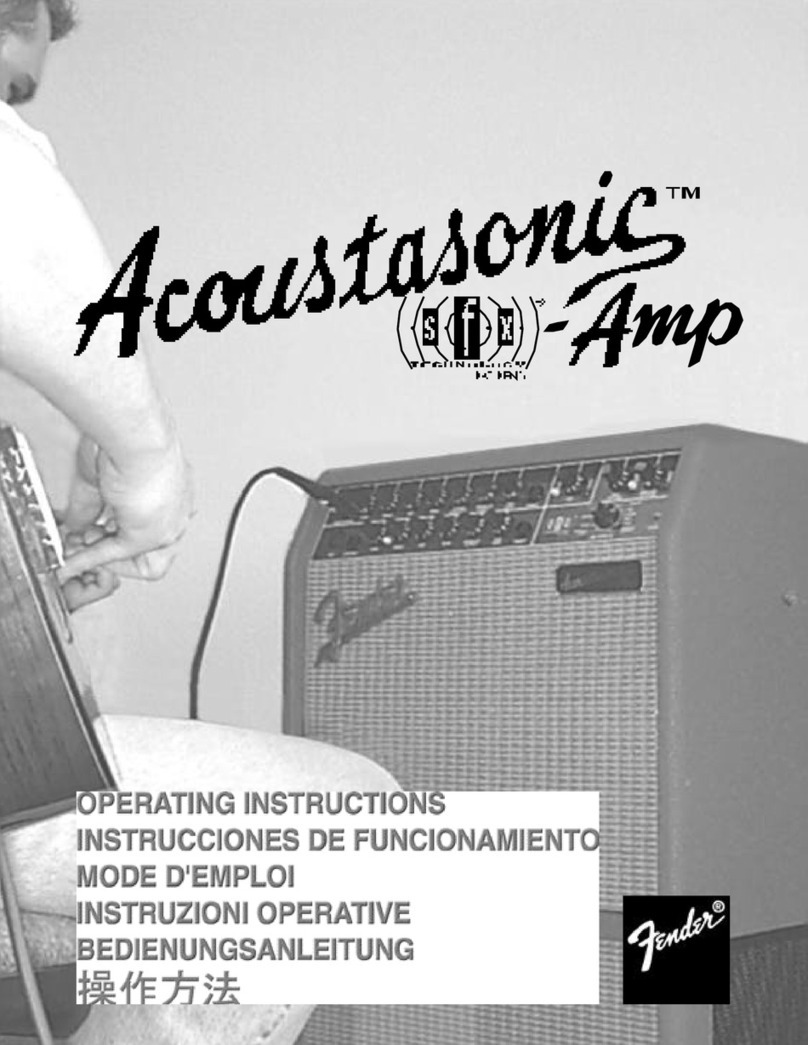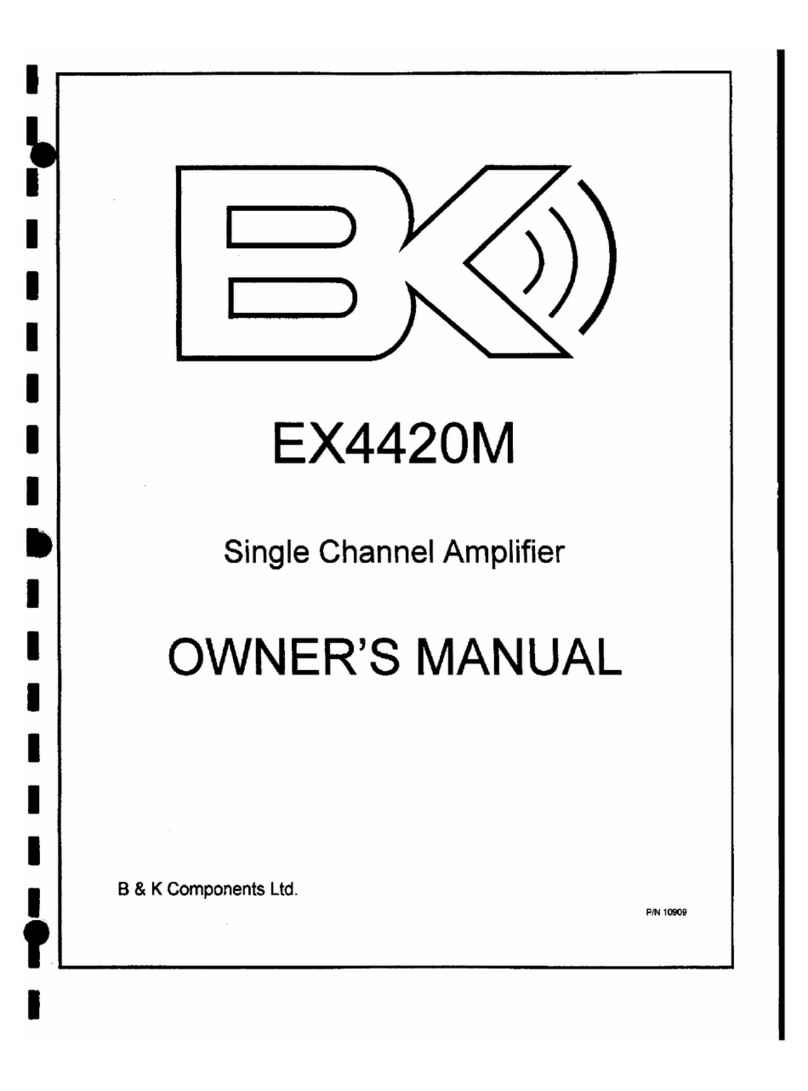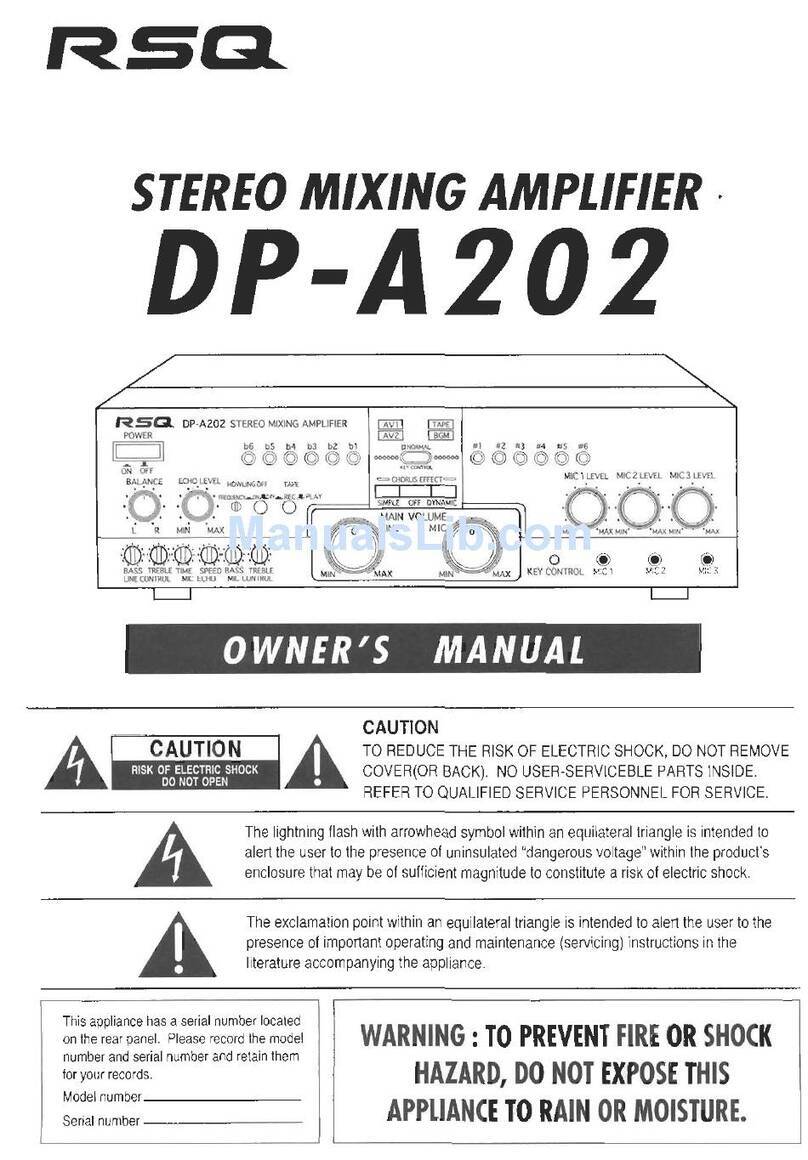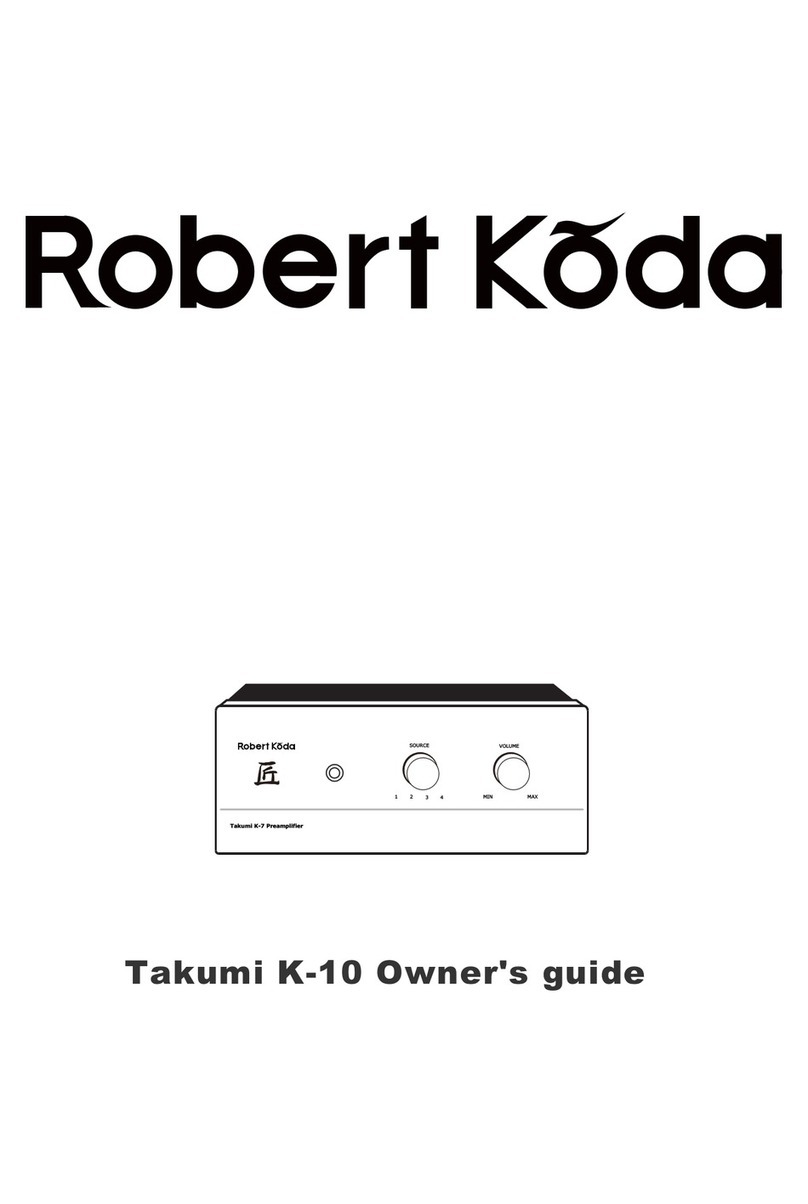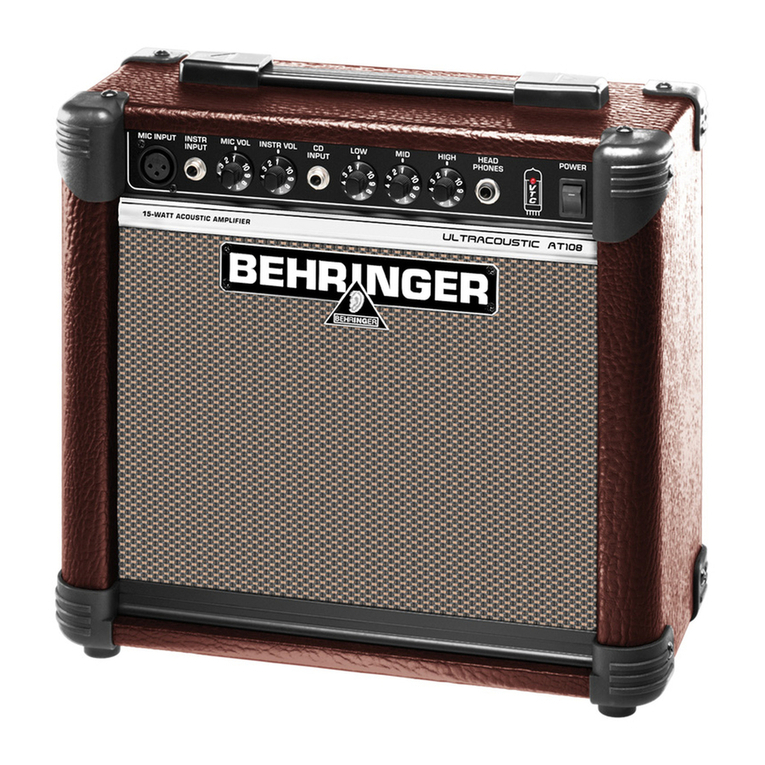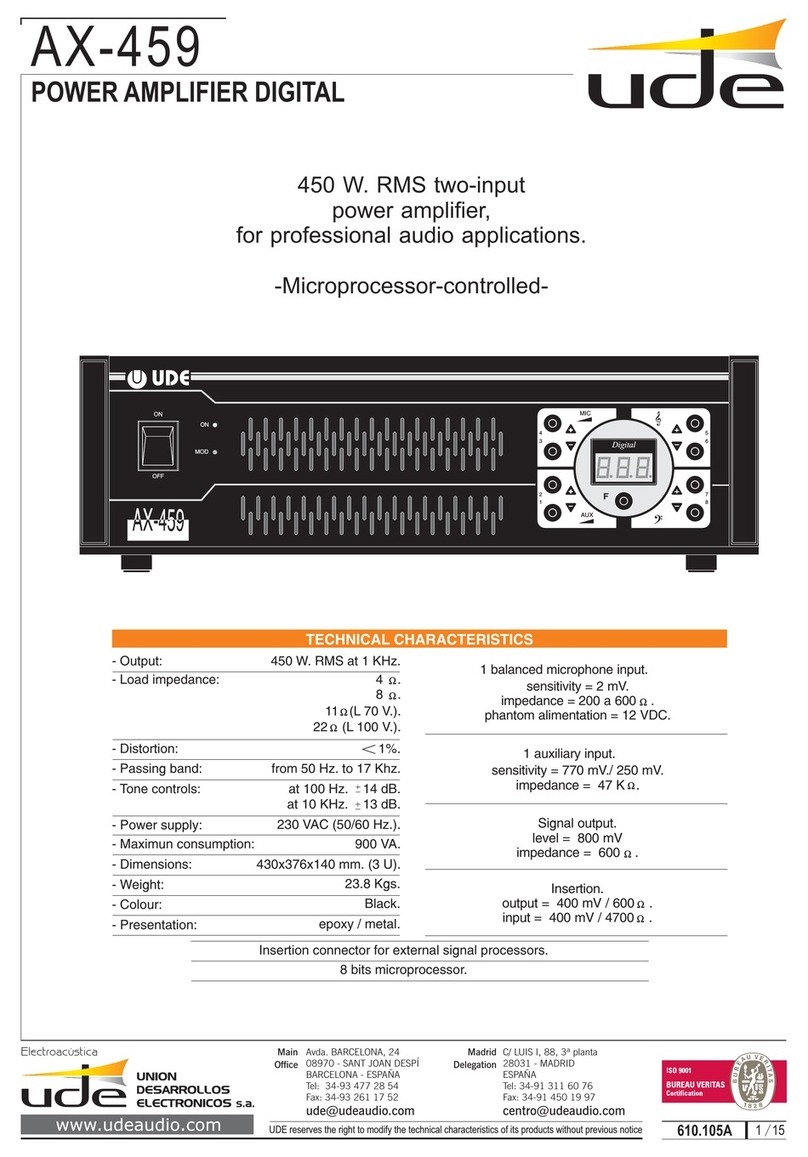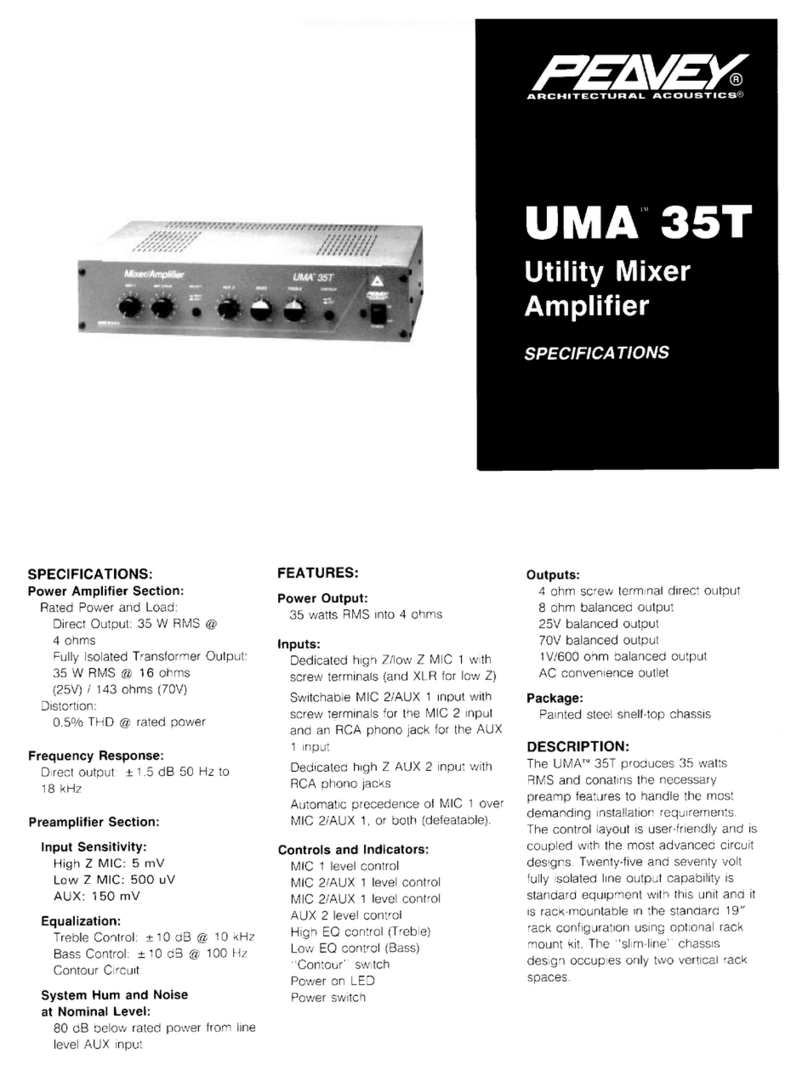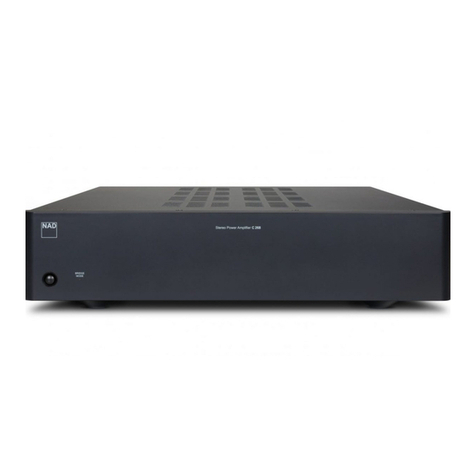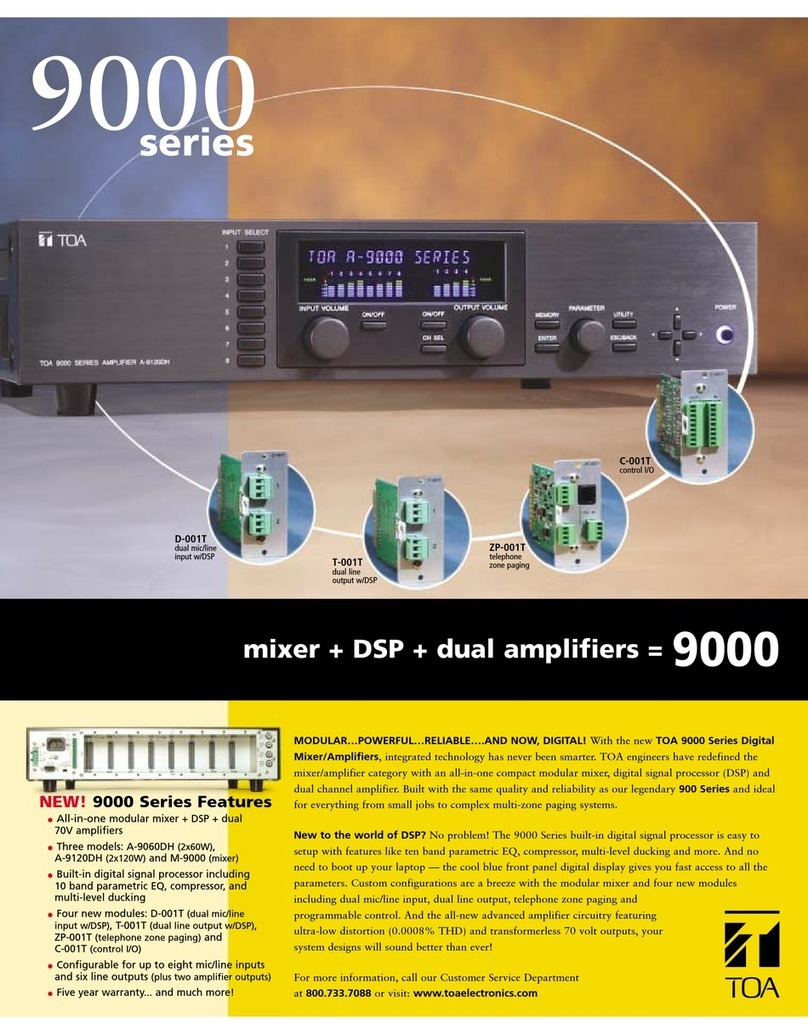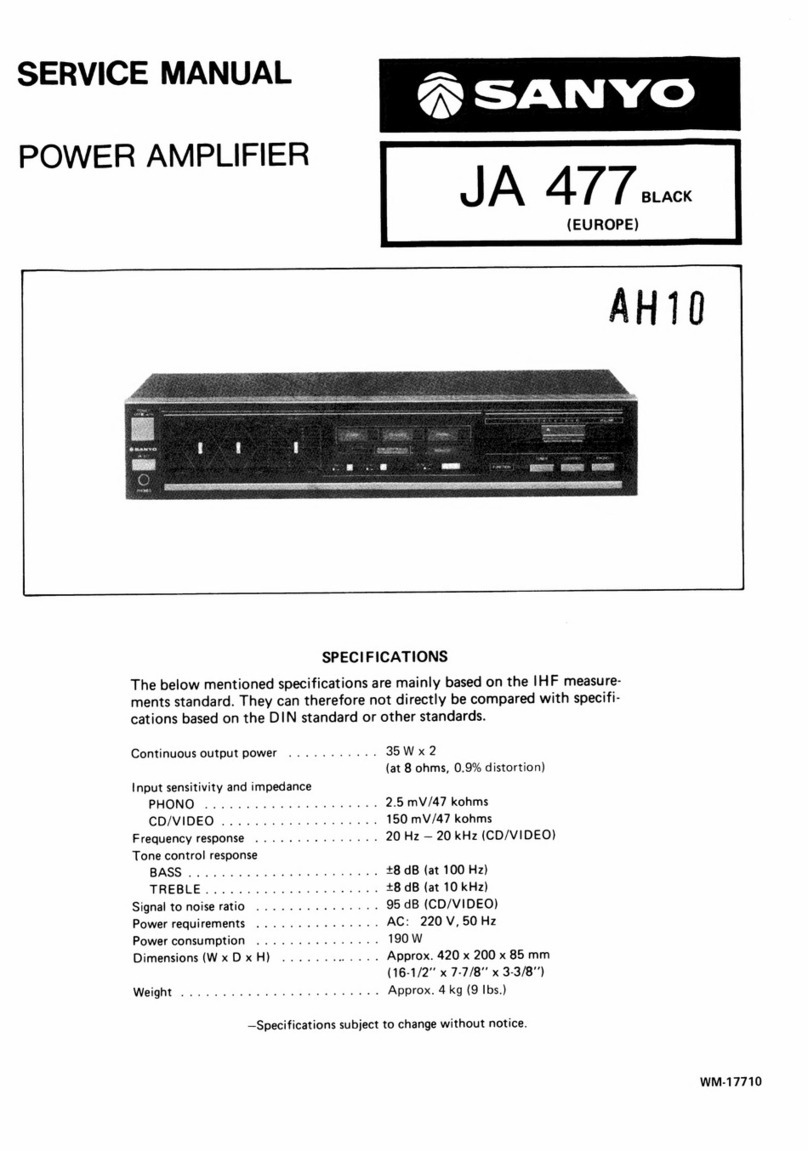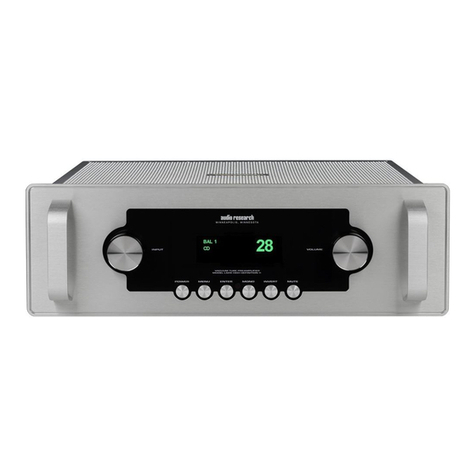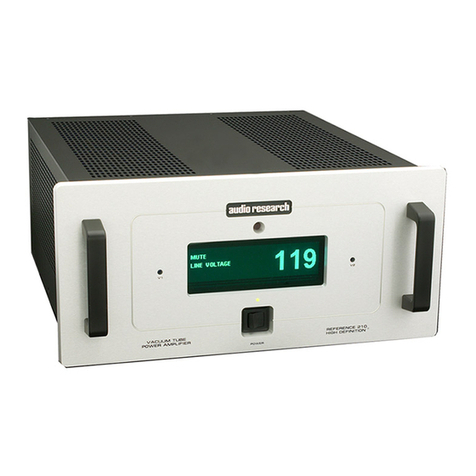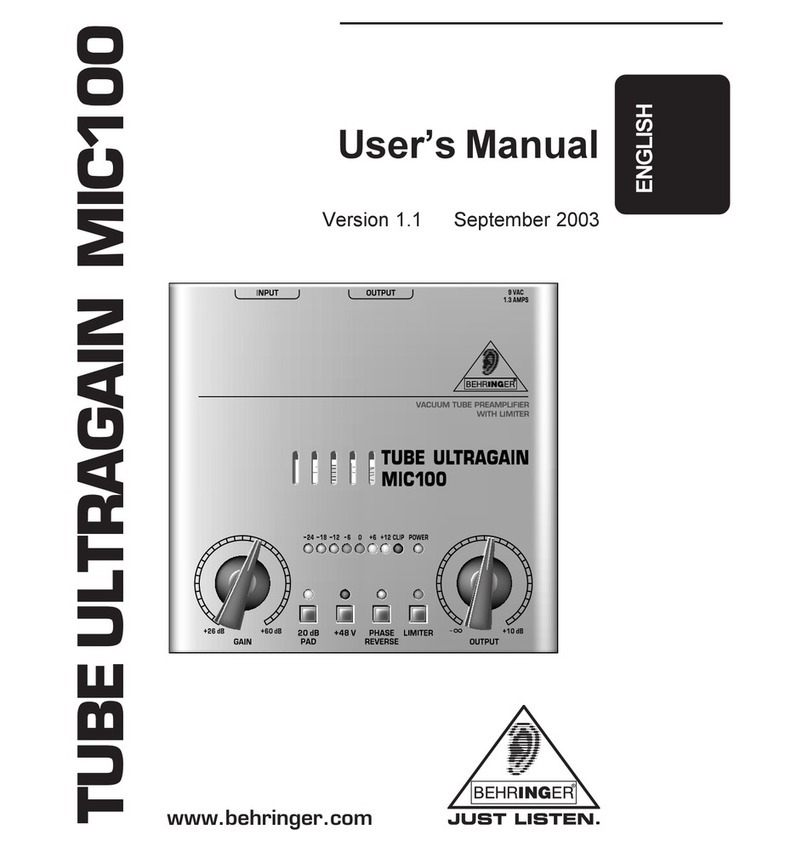audere Pro JZ Series User manual

Pro JZ Revision 2. © 2014 by Audere Engineering LLC - All Rights Reserved.
INSTALLATION OF THE AUDERE PRO JAZZ PREAMP
Tools needed
• Small screwdriver - #0 or 2.4mm t well. Do not force t a large bit
• Wire stripper/cutter/pliers
• Matches or Hot Air Source - for reducing heat shrink
Installation Video - www.audereaudio.com/Video/ProJZ_Install.htm
Frequently Asked Questions - www.audereaudio.com/FAQ_Installation.htm
Pro JZ Preamp, models will vary. Battery not included.
Installation
A. Remove your existing control plate, save the screws for installing the new preamp.
B. Remove existing pickup connections, bridge and cavity ground connections.
C. The pickup and ground wires should have the insulation stripped back 0.2” to
expose clean bare wire.
D. Insert the wires into the green connector as labeled in photo above; tighten the
connector screws to hold the wire. Do not use an oversized screwdriver.
E. A loose Grey/White wire comes off the center jack tab, attach this wire to the bridge
and cavity ground wires using the crimp connector. Crimp with pliers; slide the heat
shrink over the crimp and reduce. See the the crimp steps in the photo below.
Regarding the Instrument Cavity:
The preamp is designed to drop into the existing cavity of most jazz style basses;
the cavity size needed is 1.2” deep, 1.1” wide (1.02” at the battery end), and 4.8”
long.
A few jazz bodies do not have standard cavities; if you nd you need to make
modications to your instrument in order to install this product, please take extra
care. Audere Audio is not responsible for damage or modications you make to your
instrument as part of the product installation.
See our limited warranty for restrictions.
F. Install a 9V battery into the battery snap. Notice how the battery ts into the cut-out
in the circuit board. The tab on the board ts behind the battery.
G. Drop the battery into the cavity rst. Make sure it is laying down at.
H. Insert the preamp into the cavity - keep all wires to the pot side and make sure they
are not trapped in-between the bottom of the circuit board and the battery.
I. Some vintage bodies may be a bit narrow at the battery jack end of the cavity. If the
jack touches the side wall, the outer wire tab can be pressed in slightly.
J. Insulating the jack contact springs from conductive paint on the cavity wall is rarely
required but can be achieved by applying electrical tape to the cavity face.
K. Verify no wires are caught between the plate and the body.
L. Attach the plate to the bass body using your original screws.
M. Insert a mono cable into the jack and verify the battery LED ashes, see next
section for ash patterns.
N. Power up your power amp, plug into the passive input and test your bass.
Battery LED Monitor
When a standard guitar cable (a mono not stereo cable) is plugged into the output
jack, the negative side of the battery is connected to ground and the circuit is powered
up. The blue LED will ash in one of four patterns to indicate the battery strength.
New Battery - A Bright Flash of 2 seconds.
Good - 3 ash sequence, 1) bright 2) dimmed 3) bright (photo below).
The center ash represents your battery strength. The intensity of
the center ash will slowly decrease over weeks of time.
Critically Low - 2 ashes per second for 5 seconds.
Change the battery before you next gig!
No Flash - Not enough juice to power up.
Grounding Note
Every pickup has at least 2 wires, Hot and Common. Commons must be connected
to our board at the green screw connector as labeled in the circuit board photo. If you
have a 3rd wire and it is a braided shield, this is a ground wire and can be connected
to the cavity ground. Do NOT connect the Common wire of the Pickups to the
Cavity Ground. Doing so would increase the power pull and cause distortion and could
shut down the preamp. If you have 4 wires you may have two Hot wires for split coils.
Check with the pickup manufacturer on how to connect the 4 wire pickups for Series
(recommended) or for Parallel operation.
Low Z Gain Adjustment
Audere’s Low Z-Mode captures the low frequencies more completely. We pre-adjust
the gains for Fender Jazz pickups. To fully realize this benet, you may need to make
a gain level adjustment to match your pickups. The circuit board photo shows the Neck
and Bridge gain pots. Turning the controls clockwise will increase the gain of the Low
Z-Mode. Adjust the gain until you get the desired sound level compared with the Mid Z
setting. Too high a gain setting will introduce distortion.
High Z Changeable Capacitors (optional)
Each Pickup has a capacitor (cap) installed in sockets on the board; 680pF for the Neck
and 330pF for the Bridge. These values were chosen based on player preferences but
can be changed to other values which will move the frequency peak location in High
Z-Mode. See the website for more information on pickups and the frequency peak.
We offer a kit of 8 cap values as an option or you can source your own. The lead
spacing is 0.100” with a lead diameter of 0.020”.
If you change the caps, trim the leads to about 0.15” length. The sockets are a rm t to
ensure good contact , so insert with care, pushing straight down.
The Z-Mode Switch (see other side)
Photo of Flash Pattern for a Good battery (occurs when jack is inserted)
LED OFF Flash is 1) Full On 2) Power Level Indicator 3) Full On
Green connector labeled for wire insertion and Board Components Identied

LIMITED WARRANTY
What this warranty covers:
Audere Audio warrants its Products to be free from defects in materials and
workmanship for one year from the purchase date and is available to the original
purchaser.
The limited warranty does not cover:
· Damage caused by misuse or abuse;
· Exposure to environmental extremes;
· Products that have been modied;
· Shipping damages of any sort;
· Damage due to use that is not in conformity with factory specications;
· Normal wear and tear or parts intended to be replaced due to normal use;
· Claims based on the subjective issue of tonal characteristics;
· Product if the serial number has been defaced, modied, or removed.
What Audere Audio will do:
If, in our sole determination, the defect is covered by the Limited Warranty, Audere
Audio will promptly repair or replace the product, at our option, and return it prepaid
to the purchaser. If the defect is not covered or is excluded from this Limited
Warranty it will be returned without repair or replacement, shipping and insurance to
be paid by purchaser.
AUDERE ENGINEERING IS NOT LIABLE FOR MODIFICATIONS MADE TO YOUR
INSTRUMENT EVEN IF THOSE MODIFICATIONS WERE MADE TO FACILITATE
PRODUCT INSTALLATION. YOU SHOULD EVALUATE THE PRODUCT FULLY
PRIOR TO A FULL INSTALLATION.
IN NO EVENT SHALL AUDERE AUDIO BE LIABLE FOR INDIRECT, INCIDENTAL,
OR CONSEQUENTIAL DAMAGES. THIS LIMITED WARRANTY IS GIVEN
AS YOUR EXCLUSIVE REMEDY AND IS MADE IN LIEU OF ALL OTHER
WARRANTIES, EXPRESS OR IMPLIED. ALL IMPLIED WARRANTIES,
INCLUDING WITHOUT LIMITATION, ANY IMPLIED WARRANTY OF
MERCHANTABILITY OR FITNESS FOR A PARTICULAR PURPOSE, ARE
HEREBY EXPRESSLY LIMITED IN DURATION TO THE DURATION OF THIS
WRITTEN WARRANTY
In the case of conicting terms and conditions between this Limited Warranty and
any purchase order, contracts or invoices, this Limited Warranty is the controlling
document.
Shipping instructions:
1. Contact Audere Audio within the warranty period and obtain a Return
Authorization (RA) number and ship to address prior to shipping.
2. Package the product for safe shipping. Mark the RA number prominently on the
outside of the box.
3. Include inside the box the RA number, your name, and address.
4. Ship the product prepaid and insured within 14 days of the RA date.
Your rights under state law:
This limited warranty gives you specic legal rights and you may have other rights
which vary from state to state; for example some states do not allow all of the
limitations on warranties.
Audere Audio
www.audereaudio.com
Have Questions?
Please visit our website for extensive information on the preamp, including a FAQ section
specic to installation and a video showing a typical preamp installation. If you don’t nd
the answers, please go to the contact us section and send us an email.
The Z-Mode Switch Function
The Z-Mode switch is an internal electronic switching system that connects different
electronic loads to each pickup which changes the way the pickup responds. Changing
the load electronically is an extension to a traditional technique used to change the
sound of a passive control setup. For example, many players will debate, for a specic
type of pickup, whether a 250K volume pot sounds better than a 500K pot. In a
standard passive bass setup, the effects of the 2 volume pots + the tone pot & it’s cap +
your amplier’s input loading determines the electrical load on the pickups and thereby
how the bass sounds. By changing the pots you will change the loading a small amount
and get a slightly different sound.
Audere’s Z-Mode system extends this concept with larger variations of the loading for
each pickup. Now a broader selection of organic sounds can be obtained from your
pickups and you are not dependent on the loading of the amplier that you are plugged
into. Mid Z-Mode gives you your traditional passive bass sound, it matches a passive
load setup, plus you have the added versatility of the High and Low Z-Mode settings,
each offering a different sound prole for more exibility. For many players, High Z
excels for slapping, while Low Z is favored when the bass needs to be ultra-deep.
The Z-Mode system includes a 3 position mini toggle switch which puts 3 different load
congurations at your disposal. To change the pickup load conguration you simply
move the switch – the preamp recongures it’s self internally to the new mode. The
factory settings for the Z-Mode switch (see column 4 in the table) are Low, Mid and
High Z-Mode loads applied to both the neck and bridge pickups. You may hear a slight
click when moving the Z-Mode switch as the preamp is doing a major reconguration.
Programming the Z-Mode Switch (Optional)
Your preamp has been optimized for standard jazz pickups but a different pickup load
may be preferred depending on your pickups and musical style. To give you the fullest
range of options each of the 3 switch positions can be set individually to any 1 of the 9
different Z-Mode congurations shown in the table that follows. This allows you to get
the best sound from your bass. The switch is available as optional accessory.
For example, some pickups do not have much of a distinct high Z-Mode response.
These pickups have a low number of turns in their coil windings and this creates a
limited amount of inductance such that the resonant peak is smaller and at a high
frequency not easily heard. But these types of pickups have a bigger separation in the
sound of Mid Z-Mode compared with Low Z-Mode. For this type of pickup you may
want to set your 3 modes to be 1) Low, Low, 2) Low’, Mid, and 3) Mid, Mid. With other
types of pickups built with a different winding pattern you might favor the High or High’
Z-Mode settings to get the most interesting sounds from your bass.
Note when 2 different Z-Mode combinations are chosen for the neck and bridge
pickups the mixing control (balance or volume pair) becomes more powerful and slight
movements of your hand to select a different location from the bridge to neck will have
a larger impact on the sound. However the noise cancelling ability of single coil pickups
is reduced because of the 2 different loadings, in this case pickup shielding may be
especially helpful (see our FAQs on-line).
Z-Mode settings:
( LED ash count)
Neck Z-Mode Bridge Z-Mode Factory Setting
Switch Position
1Low Low Toward Neck
2Low ’ Mid
3Low ’ High
4 Low ‘ High ‘
5Mid Mid Centered
6Mid High
7 Mid High ‘
8 High High Toward Bridge
9 High High ‘
High’ is equivalent to High Z-Mode without the loading capacitor. Low ‘ is similar to Low
Z-Mode but even darker - i.e. the pickup signal has less high frequency content.
Reprogram the Z-Mode switch load settings:
Re-programming the Jazz’s Z-Mode switch is done with an optional external switch,
which is removed after programming. This temporary switch includes a connector plus
wires to allow the switch to be located external to the cavity. The 2 pin connector plugs
onto the jazz board, (orientation does not matter) and the wires are fed upward and
snaked out the cavity below the plate. The plate should not be screwed down tightly
while programming up the Z-Modes so that you do not crush the wires. See photo.
1) Place the Z-Mode switch in any of its 3 positions – you are going to program this
selected switch position to any one of the Z-Mode congurations from the above table.
2) Press and release (click) the programming button
a) The number of the current Z-Mode setting will be ashed on the LED. For
example, in the center switch position if the LED ashes 5 times, it is programmed
for the factory default of Mid, Mid Z-modes.
b) If the desired mode is already programmed into this switch position – simply stop
for approximately 5 seconds – you will see the LED ash fast and the programming
operation will be aborted leaving the Z-Mode in the present conguration.
c) If you want to change the Z-Mode setting, click the programming button the
number of times shown in column 1 to set this new mode into this Z-Mode switch
position.
i) The LED will light each time you press in the button
ii) After you are done – stop for approximately 5 seconds – the LED will ash the
count of the mode stored.
iii) If you enter an invalid number of button presses, (10 for example) the LED will
fast ash and the programming operation will be aborted.
iv) If you move the Z-Mode switch during programming – the LED will fast ash
and the programming operation will be aborted.
After you have programmed up your Z-Mode selections – pull up the preamp, remove
the programming switch and store it so that you can reprogram the Z-Mode selections
in the future if you want to, then simply re-install the preamp without the programming
switch.
This manual suits for next models
2
Other audere Amplifier manuals
